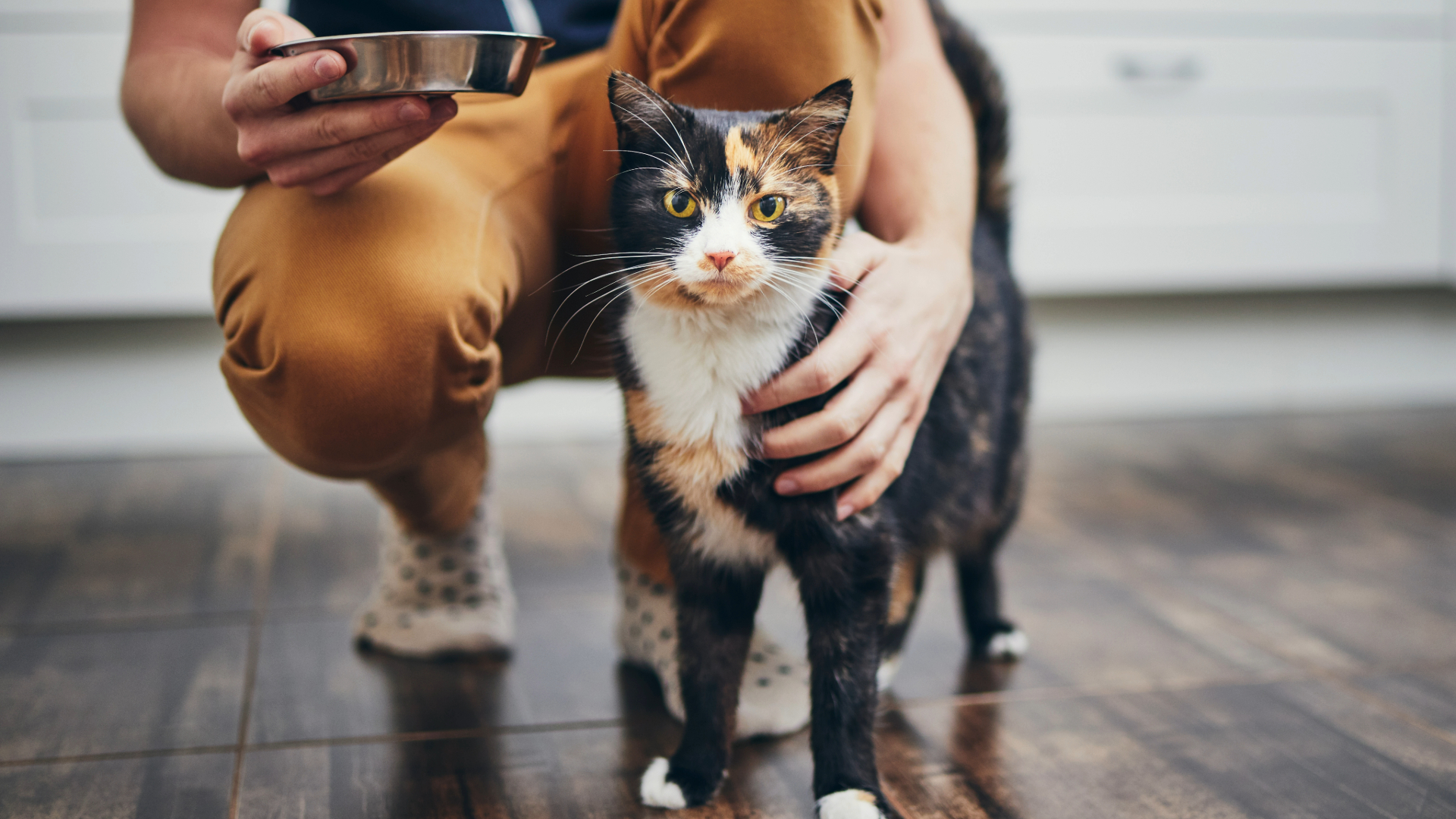
Your cat’s diet plays a crucial role in their overall health and happiness, with a poor one potentially leading to serious health issues like obesity and heart disease. That’s why it’s so important to get it right and provide them with the best cat food possible.
As a pet parent, you’re probably aware that cats can be finicky creatures, sometimes going off their food for no apparent reason. However, it’s not just the menu you need to consider—things like cleanliness and bowl positioning can be a big deal to your kitty. You also need to be mindful to check expiry dates, and whether the food is appropriate for their life stage.
While this might seem like a lot to take on board, we’ve simplified it into five practical tips with the help of Dr. Rebecca MacMillian, a qualified vet with 16 years of experience. Keep reading to discover how you can improve your cat’s diet and help them stay happy and healthy.
How to improve your cat's diet
1. Provide an age-appropriate diet
Just like humans move from milk to baby food to an adult diet, cats have to change their diets accordingly too. Feline life stages can be divided into four categories: kitten (0-12 months); adult cat (1-7 years); senior cat (7-11 years) and geriatric cat (11+ years). Each of these life stages has unique nutritional requirements.
While keeping an adult cat on kitten food isn’t dangerous and won’t cause them any immediate harm, the extra calories found in kitten food can lead to an increased risk of obesity. Feline caloric needs, as well as their vitamin and mineral requirements, can again change as they approach their senior and geriatric needs, so a transition from an adult diet to one of the best senior or geriatric cat foods can help optimize nutrition at these life stages.
Dr. MacMillan says: “Don’t underestimate how important it is to give the correct diet for your cat’s life stage. Diets are formulated carefully to meet the needs of the various age groups, so inappropriate choices could cause problems. For example, a young growing kitten needs plenty of protein and calories for growth, whereas this may cause unwanted weight gain in an adult cat."
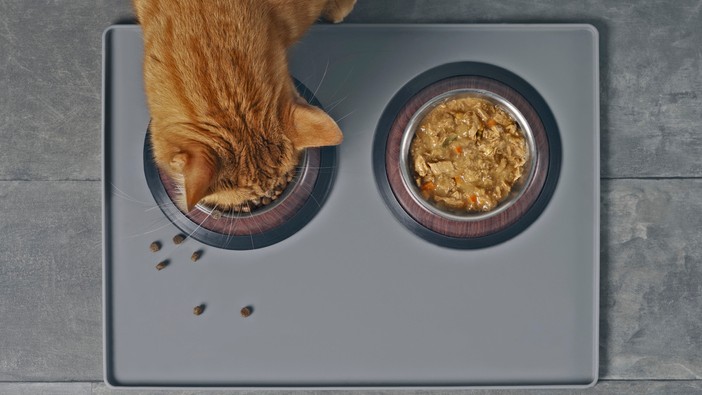
2. Keep their feeding areas clean and free from germs
It may seem obvious, but there are a number of factors that can influence a cat’s appetite. For instance, plastic bowls tend to develop grooves and scratches in their surface over time, which retain food particles and bacteria.
This makes these bowls hard to clean, which can lead to odors in the bowl that may discourage your cat’s appetite. Many vets recommend ceramic, glass, or stainless steel bowls, to avoid the issues inherent in using plastic bowls.
Don’t just top off your cat’s water or put new cat food on top of the old food. Think about how you would like it if your dinner consisted of a freshly-cooked lasagna draped over yesterday’s cold, stale offerings. Your cat probably won’t appreciate it any more than you. Instead, dispose of old food and clean the best cat bowl thoroughly before refilling.
Dr. MacMillan says: “Old food can lose its nutritional value and may even make your cat sick. Keep germs at bay by throwing old food out, washing bowls thoroughly, and wiping down surrounding surfaces. Don’t keep topping up the dry kibble bowl as the ones at the bottom are probably stale or the fat in them could have gone rancid.”
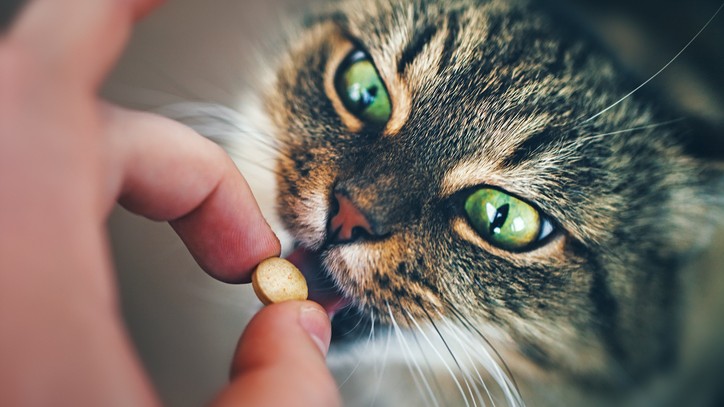
3. Give treats in moderation
Just like people, cats love treats. However, it’s important to resist the urge to deal them out freely. Treats are high in calories and low in nutritional value, so save them for special occasions, or as a reward for good behavior.
No more than 10% of your cat’s daily caloric intake should come from treats. A diet that is heavy in treats will lack many of the nutrients that are found in a well-balanced cat food. Consider saving the best cat treats for use as a special reward, giving them after nail trims or other less pleasant situations. It's a good idea to read our guide that answers, 'How much should I feed my cat?'
Dr. MacMillan says: “Treats can be offered to many cats, but only in moderation. Too many treats can lead to an unbalanced diet and weight gain. You should also consult your vet if your cat is on a special diet or has a medical issue.”
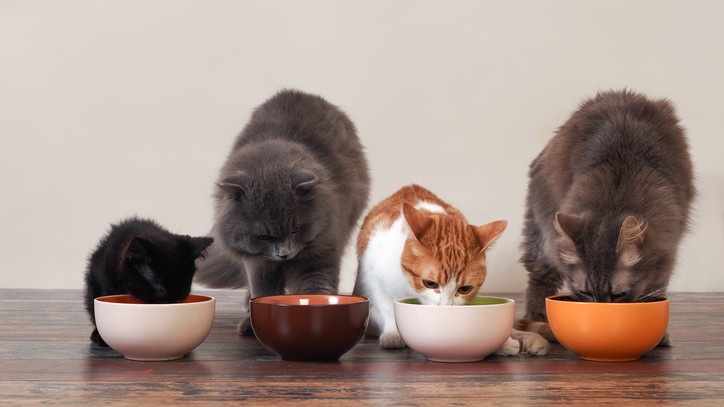
4. Make food changes gradually
Cats don’t require regular food changes, and it’s completely appropriate to feed your cat the same diet for years. However, there are a number of valid reasons to change your cat’s food. Maybe your cat has aged into a new life stage, their favorite brand has become unavailable, or a new medical condition requires a nutritional change.
Regardless of why you are changing your cat’s food, it’s important to do so gradually. A gradual diet change can help you avoid the diarrhea in cats and other gastrointestinal effects that can accompany a sudden food change.
When changing your cat’s diet, you should aim for a gradual transition over a period of one week. On the first day, mix a small amount of your cat’s new diet with their old food. Each day, add a little more of the new food and a little less of the old food.
By mid-week, you should be feeding a 50:50 mixture of new and old food, and by the end of the week your cat should be fully transitioned to the new food. If even this approach seems too stressful for your cat, consider extending the transition period to ten days or even two weeks. By transitioning gradually, you should be able to minimize the effects that can be associated with a sudden food change.
Dr. MacMillan says: “If you are looking to make changes to your pet’s diet, then do so gradually. If you suddenly start a new brand or food type (e.g. shift from dry to wet), it could cause tummy troubles with the gut-friendly germs in your cat’s digestive system struggling to cope. Mix new food in with your pet’s old diet and slowly change the ratio over at least a week until they are on solely the new food.”
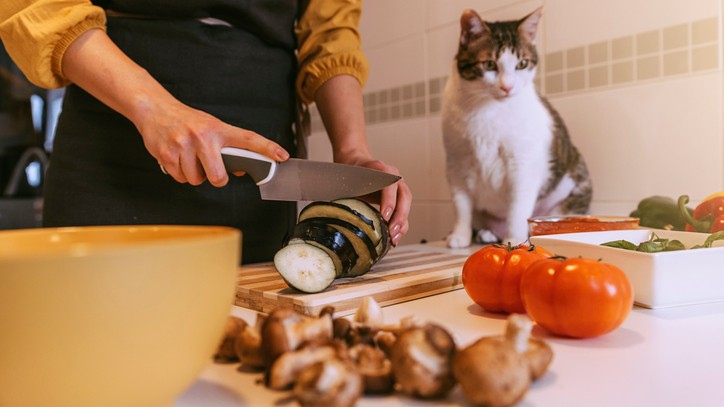
5. Avoid certain types of human foods—they could be poisonous
While it may be tempting to give your cat the leftovers off your plate, or a bowl of chocolate ice cream to lick clean, you really shouldn’t. Many foods that seem perfectly innocuous to us can be dangerous to cats, causing anything from lethargy and diarrhea to serious pancreas and kidney damage—or worse.
Among the chief culprits are caffeine drinks, chocolate, onions, garlic, grapes, and milk. Be sure to read our guide to human foods that are poisonous to cats and, when in doubt, stick to the best wet cat food or best dry cat food!
Like people, cats all have unique personalities and unique nutritional needs. It’s difficult to recommend a one-size-fits-all approach when it comes to your cat’s diet. That said, following the above guidelines will go a long way towards ensuring your cat’s health and safety.
Want to learn more? You might also want to read: Is dry cat food best?, Is wet food bad for cats? and Can cats eat corn?







